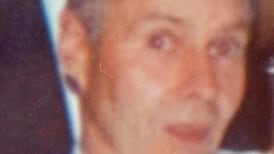A musician who claimed he injured his left shoulder when he fell into a deep, dry, concrete-lined moat after he left Martello tower in south Dublin to "relieve himself" had claimed he was unable to play gigs for a year. However, pictures taken from a video showed him playing bongo drums and jumping on a trampoline and he had not appeared to have any problem whatsoever with his arm, the Circuit Civil Court heard, as he lost a €60,000 damages claim.
Judge Jacqueline Linnane said that in her view, Philippe Clark (56), Potterath House, Kilmanagh, Co Kilkenny, had failed to prove that Niall O'Donoghue, owner of the tower at No 7, Killiney, had been negligent. The judge said that on the night of March 12th, 2014, Mr Clark had been rehearsing with fellow musicians after he had been given permission to play a series of gigs in the tower.
He had taken a break to relieve himself and had asked Niall O’Donoghue’s son, Philip, where the toilet was. When told to exit the rehearsal room and turn right outside, Clark had decided to turn left instead to admire the view and relieve himself in the garden.
He claimed he had been walking on the grass when his left foot suddenly “fell” into the one-metre-deep moat while his right foot remained up on the bank. He had felt a crack in his groin area when his legs were splayed in opposite directions and had also injured his shoulder in the fall. He had suffered pain and swelling to his groin.
Judge Linnane told Conor Kearney, for O’Donoghue, that Mr Clark, who claimed there had been insufficient light in the area on the night, had visited the grounds before in daylight. She said that Mr Clark had told a doctor, who examined him on behalf of Mr O’Donoghue, that following his injuries he had been unable to play gigs for a year.
“In fact, Mr Clark did a gig the following day, then participated in a video recording and another gig in May 2014,” Judge Linnane said. She said pictures taken from the video showed him playing bongo drums and jumping on a trampoline and he had not appeared to have any problem whatsoever with his arm.
Mr Kearney told the court that the property was privately owned even though visitors were sometimes allowed into it. He said Mr O’Donoghue, who had spent substantial sums of money to renovate the tower to its original state, denied negligence or liability for Mr Clark’s claim.
“Mr O’Donoghue was good enough to let you use his property for free and you end up suing him after you tried to relieve yourself in his garden and fell into a moat which was obvious to everyone,” Mr Kearney told him in cross-examination.
Philip O’Donoghue, the defendant’s son, told the court that after Mr Clark had fallen, he had told him it was his own fault as he had been “spinning around looking at the stars”.
Judge Linnane said she was satisfied after hearing evidence from forensic engineer Pat Culleton, on behalf of Mr O’Donoghue, that the moat was visible in the available light. She dismissed Mr Clark’s claim and awarded legal costs against him.









